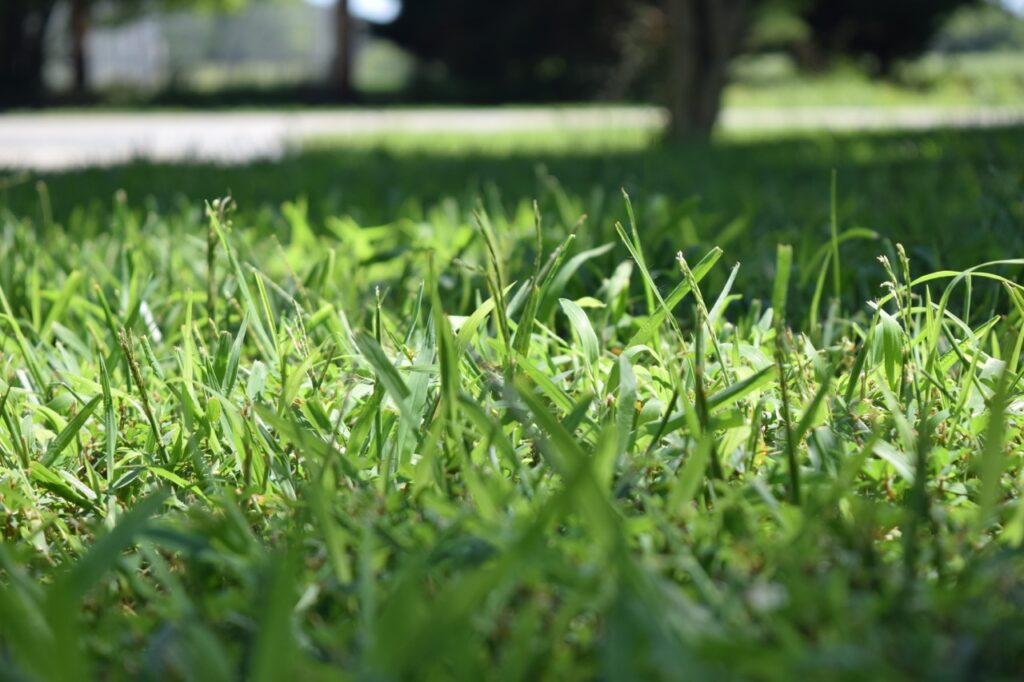It can be tempting to get into the yard at the first signs of spring but, in Utah, chances are there will be additional cold snaps well into April.
When to Start Lawncare in Utah
Did you know that your lawn goes dormant during the winter months? So while it may be unnerving to look out at your yard and see a stretch of yellow or brown grass, it’s a good thing! The truth is, you don’t need to start treating your lawn until late spring, and here’s why.
Wait Until the Trees Blossom
Yes, you may get hit with some gorgeous, 50+ degree days in February and March. You’re itching to get outside and start clearing debris from your flower beds and rev up the lawnmower.
If you prematurely start to mow your lawn in early spring or remove dead leaves and mulch from your garden, you run the risk of removing a layer of protection that your yard needs when the temperature inevitably dips below freezing again.
A good rule of thumb is to hold off on lawncare until you see blossoms on the trees in your neighborhood.
Why Wait?
If you mow, fertilize, and water your lawn too soon in spring, you can run into a slew of problems.
- Stored moisture underground hasn’t been used yet
- The Earth is still too frozen to absorb more water
- Fertilizing too early makes plants too tender to survive subsequent frosts
- Bug habitats are destroyed when yards are cleaned up in early spring
To avoid disturbing the natural rhythm of nature, wait until day and night temperatures are consistently above 40 degrees before getting your hands in the dirt. By then, you’ll see signs that your lawn is waking up and is actively trying to grow.
What to do First
Promote new growth and protect it by waiting until the grass has hit about three inches in height before mowing it this spring. You may even want to thatch the yard first in order to remove any buildup that has accumulated through the winter months. Here’s what else you should tackle in spring.
Fertilize
In Utah, we start fertilizing lawns in March and April, depending on the weather. If you apply fertilizer too soon, the grass isn’t “awake” enough to absorb the nutrients and you’re just wasting your time and resources.
Granulated fertilizer should be applied earlier in the spring than liquid fertilizer, as the granules need more time to break down and be absorbed by the lawn. Whichever type of fertilizer is applied, be sure to give the grass a good watering to encourage absorption.
Aerate
In addition to spring thatching, aerating is a good way to help encourage new growth in your lawn. It helps reduce soil compaction and can encourage nutrients to penetrate the soil deeper. This will teach your grass to grow deeper, stronger root systems so it’s hearty enough to withstand Utah’s hot summers.
Seed
When the snow melts, it’s easy to see where your lawn is getting patchy. Maybe you missed a pile of leaves and now you’re faced with a dead spot you want to reseed. Spring is the time to seed your lawn and doing so after aerating or thatching is a good practice. Not only will seeding in spring bring new life to your grass, but it can discourage weed growth because your lawn is thicker.
Treat for Weeds
Sometimes you do need to treat your lawn to prevent or eradicate weeds. Even the best gardeners are faced with unwanted visitors every spring, either in the form of weeds or pests. Applying a pre-emergent in April or May can help deter weeds from growing throughout the summer. Applying too early means the solution will be less effective by the time plants are starting to wake up, and weeds are free to grow wild by June.
Best Times to Care for Your Lawn
In addition to knowing when, in the season, you should start lawn care, there are also better times of day than others to carry out these tasks.
For starters, noise ordinances in your area may prohibit loud yard work (mowing, edging, etc…) before 7 am and after 10 pm. While it may be an ideal time temperature-wise come August, it’s not permitted.
You can, however, water your lawn in the wee hours of the night, which will minimize how much water is evaporated before it hits the ground. Ideally, you should water your lawn before 10 am.
If you’re tackling lawn maintenance yourself, we have some more tips on our website regarding how often to mow, when to water, and the best fertilizer practices. Or, we can provide these services for you, and we’ll let you know beforehand when you’re due for an application.


